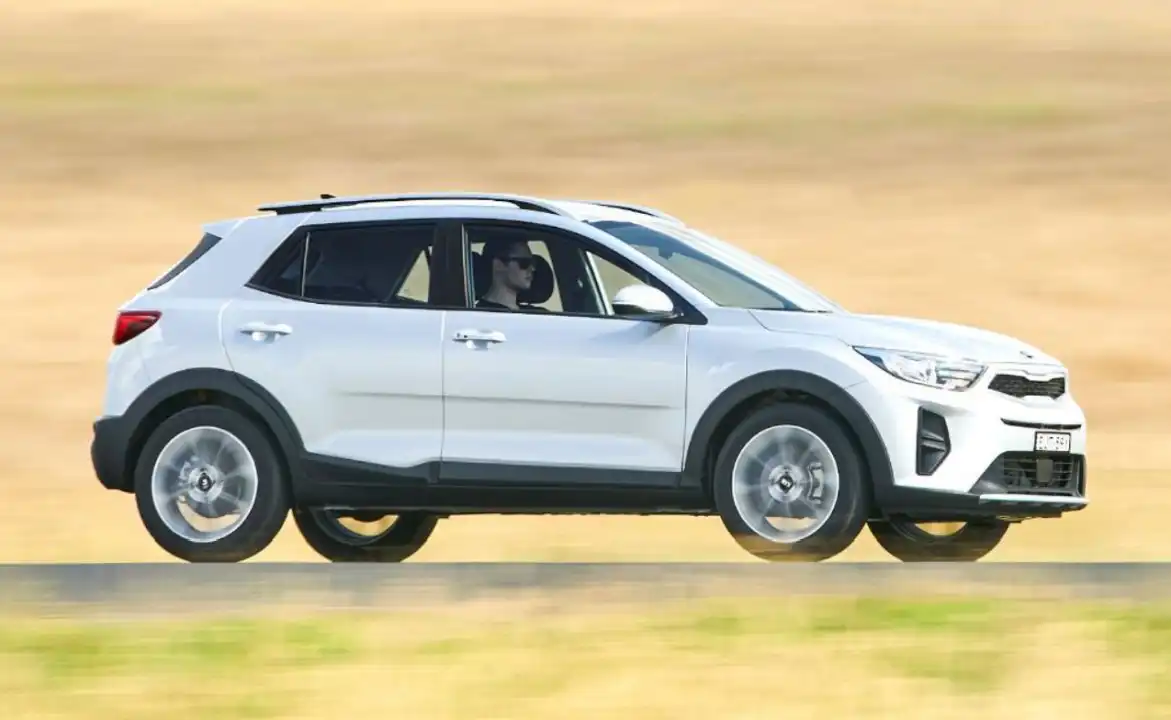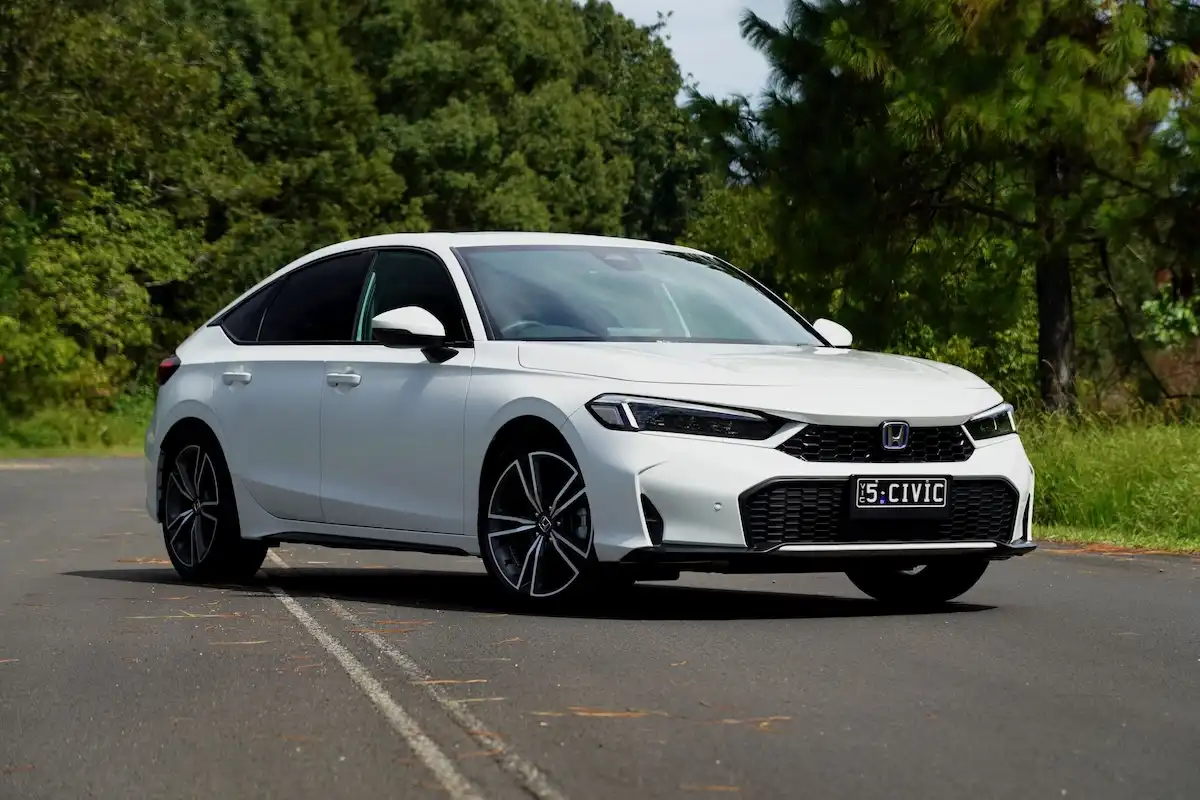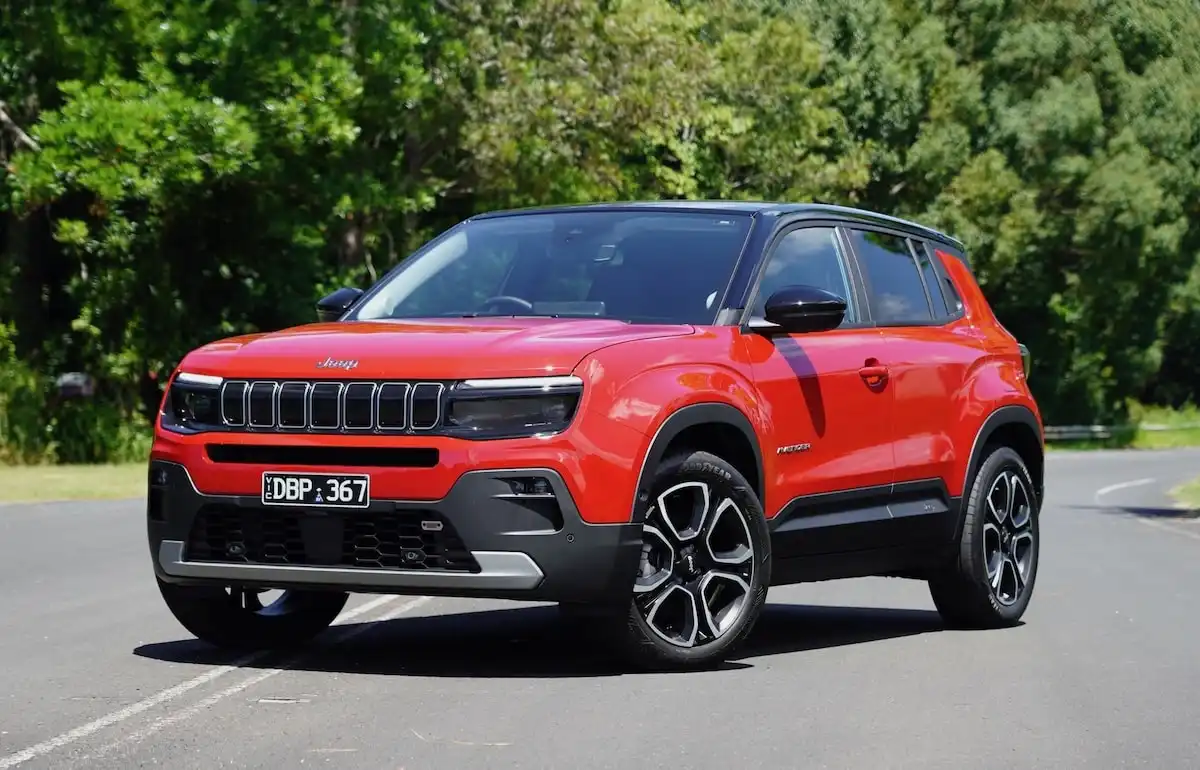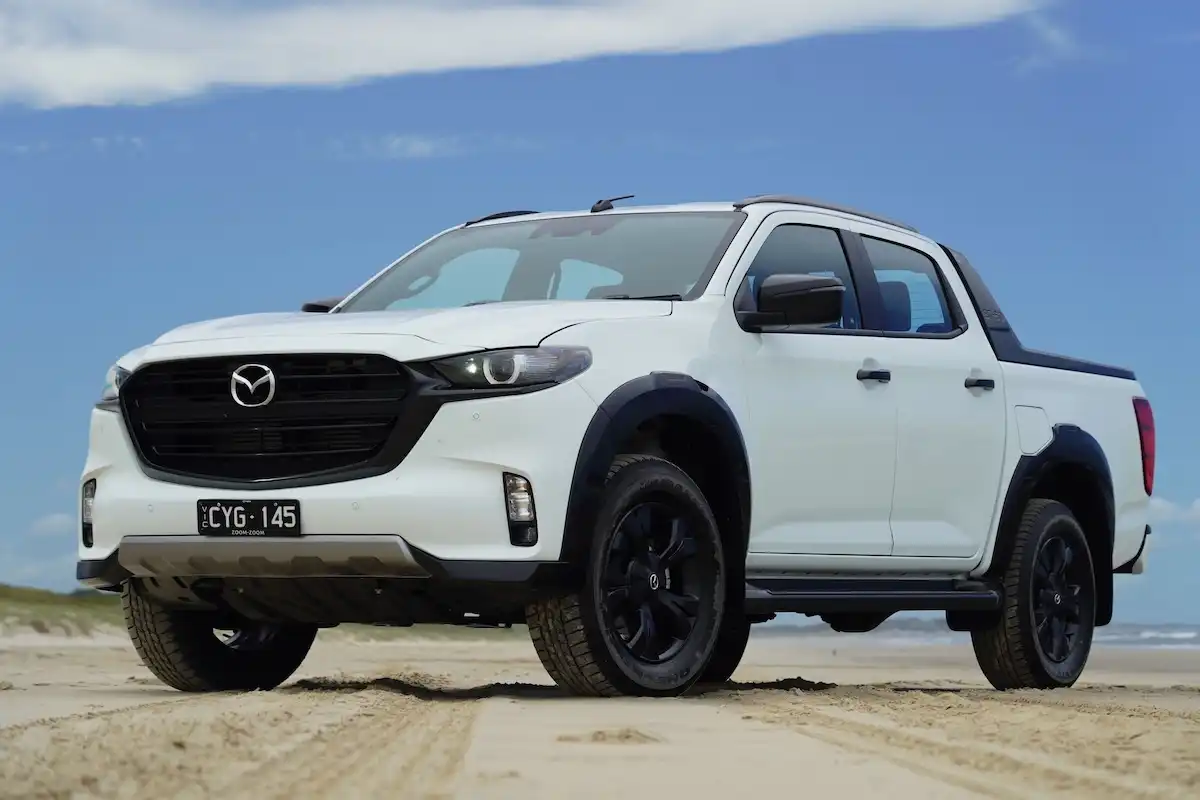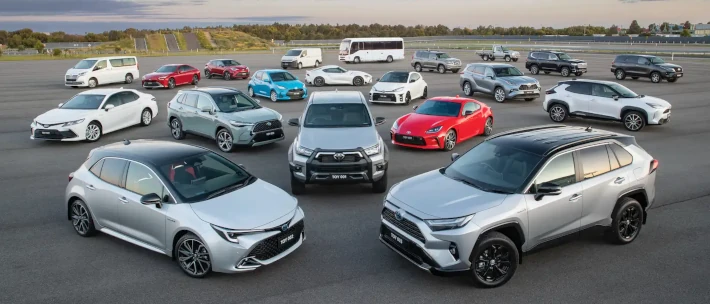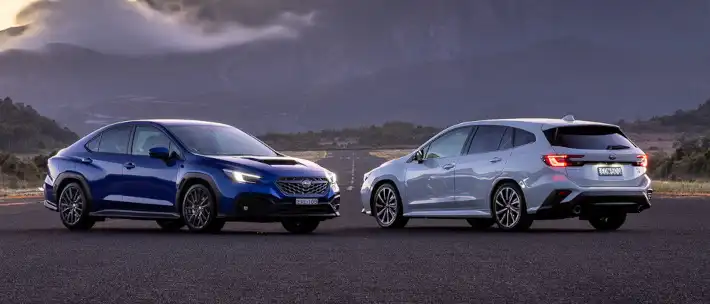With affordable entry prices featuring decent equipment lists and the option of a plumped-up GT-Line flagship, there’s a Stonic for a wide range of buyers - but which is the pick of the bunch?
That’s what we’ll be unpacking as we look closely at the 2024 Kia Stonic’s features, fuel efficiency, practicality, warranty and safety equipment lists to find out how it stacks up as a value-packed compact SUV.
Kia Stonic Competition
Kia Stonic |
VS |
Hyundai Venue |
| Mazda CX-3 | ||
| MG ZS | ||
| Mitsubishi ASX | ||
| Toyota Yaris Cross | ||
| Volkswagen T-Cross | ||
| Renault Captur |
How Much Does It Cost?
The 2024 Kia Stonic range is priced from $22,290 for the entry-level Stonic S Manual, with the Stonic S Automatic priced at $23,790.
Stepping up to the Stonic Sport Manual brings the price to $25,290 with the Stonic Sport Automatic priced at $26,790.
Finally, the range-topping Stonic GT-Line is priced at $30,790.
Keep in mind that these prices are subject to change and do not include on-road costs.
How Much Can OnlineAuto Save You?
Using OnlineAuto’s car buying service, you could save by letting one of our car specialists help you find the best value model for you.
Kia Stonic (S) Specifications
| Model Date | 2024 |
| Make | KIA |
| Model | STONIC |
| Series | YB MY24 |
| Variant | S |
| Body | 4D WAGON |
| Fuel type | UNLEADED PETROL |
| Transmission | 6 SP AUTOMATIC |
| Drive | FWD |
| Engine | MPFI |
| Engine capacity | 1368 |
| Engine configuration | VARIABLE DOUBLE OVERHEAD CAM / 16 valves |
| Engine RPM | 6000 / 4000 |
| Cylinders | 4 |
| Torque | 133 |
| KW | 74 |
| Fuel tank size | 45.0 |
| Fuel usage specs | 6.7 / 0 |
| CO2 | 155 |
| ANCAP security rating | 5 |
Get in touch with one of our Car Buying Specialists today.
Request a quoteWhat Features & Specs Does the Kia Stonic Have?
Kia’s entry-level Stonic S range comes riding on a set of 15-inch steel wheels and receives black cloth upholstery, halogen headlights, cruise control, air conditioning, a rear-view camera with rear parking sensors, a 4.2-inch digital instrument cluster and a six-way manually-adjustable driver’s seat.
Stepping up to the Stonic Sport adds 17-inch alloys, keyless entry & start, a sliding centre console armrest, leather-wrapped steering wheel and gear lever, heated and power-folding side mirrors and some infotainment upgrades we’ll cover in the next section.
Finally, the range-topping Stonic GT-Line receives a GT-Line body kit with special 17-inch alloys, climate control, alloy pedals, LED headlights, daytime running lamps and fog lights, leather upholstery, a panoramic sunroof and automatic wipers.
Connectivity & Infotainment Features
All members of the MY24 Kia Stonic range pick up the same infotainment system sitting atop the dashboard.
Kia’s touchscreen infotainment display for the Stonic measures 8.0-inches and is paired with a six-speaker sound system and a USB-A port in the front of the cabin.
Upgrading to the Stonic Sport or above adds satellite navigation and DAB+ digital radio into the mix.
Does the Kia Stonic Have Wireless Apple CarPlay & Android Auto?
Interestingly, wireless Apple CarPlay & Android Auto connectivity is available in only the base model Stonic S.
This will come as great news for price-conscious buyers looking for the convenience of wireless Apple CarPlay & Android Auto.
Buyers opting for the mid-spec Stonic Sport or the range-topping Stonic GT-Line will have to make do with wired Apple CarPlay & Android Auto via the USB-A port hidden away at the base of the Stonic’s dashboard.
Is the Kia Stonic Comfortable to Drive?
Kia’s baby of the SUV range is quick to prove itself as a perfect little companion for the urban jungle, though the base engine leaves a lot to be desired.
Under the bonnet, the entry-level Stonic S and Sport come powered by a very modest 1.4-litre four-cylinder petrol unit that kicks out 74kW of power and 133Nm of torque.
Compact SUVs aren’t exactly famed for their power outputs, and, while there’s enough poke to get you off the line and up to speed, you’ve got to work the little engine to the point that fuel efficiency starts to drop.
The flagship Stonic GT-Line picks up a more spirited 1.0-litre turbocharged three-cylinder that pushes out the same 74kW of torque and much-needed 172Nm of torque that adds some urgency while accelerating.
While it underwhelms on power, that’s hardly the point of a compact SUV - where the Stonic begins to shine is when you put it to the test in the city.
It’s easy to park thanks to its small proportions, remains user-friendly in tight quarters thanks to its lightweight steering rack and offers nimble handling that makes it perfectly suited to the urban jungle.
Better yet, it’s a small SUV that doesn’t feel overwhelmed when you leave smooth city streets for the highway and country roads.
Thanks to Kia’s local suspension tune, the Stonic is sure-footed at high speeds and impressively capable on the bends of a country road, making for one of the more versatile members of the small SUV segment.
Upgrade to the Stonic GT-Line and the suspension wizardry makes it even more of a performer when pushed, though overall it offers a great balance of dynamic handling without impacting its everyday comfort levels.
All up, while the Stonic doesn’t blow you away on power, it doesn’t disappoint on a daily drive and proves a great fit-for-purpose compact SUV for the Aussie market.
Is it Fuel Efficient?
One upside of the Stonic’s lack of power is that fuel efficiency is pretty impressive, particularly in the case of the GT-Line’s turbocharged three-cylinder engine.
Officially, the base Stonic S & Sport Manual are rated at 6.0L/100km on a combined cycle, rising up to 6.7L/100km in the case of the entry-level Stonic Automatic S and Sport variants.
The flagship Stonic GT-Line with its turbocharged three-cylinder engine is by far the most fuel-efficient, returning figures of 5.4L/100km on the combined cycle.
How Much Fuel Does the Kia Stonic Use Around Town?
-
Stonic Four-Cylinder Manual City Consumption: 7.4L/100km
-
Stonic Four-Cylinder Automatic City Consumption: 8.6L/100km
-
Stonic Three-Cylinder City Consumption: 6.4L/100km
How Much Fuel Does the Kia Stonic Use on the Highway?
-
Stonic Four-Cylinder Manual Highway Consumption: 5.2L/100km
-
Stonic Four-Cylinder Automatic Highway Consumption: 5.6L/100km
-
Stonic Three-Cylinder Highway Consumption: 4.9L/100km
Is it Practical and Spacious?
While small SUVs aren’t exactly famed for their space and practicality, Kia has done a solid job making the Stonic a reasonably spacious offering.
With its Rio hatchback underpinnings, the front of the Stonic’s cabin offers more than enough space for tall drivers to get comfortable, with ample headroom and width up front.
The layout of the dashboard itself isn’t too flashy, though its simplicity is underscored by great ergonomics that make quick adjustments while driving a simple task.
In the front of the cabin, there’s a small storage tray to swallow up smartphones hiding behind the gear lever, a pair of cupholders, large door bins on either side of the cabin, decent storage inside the folding armrest and a glovebox.
Move to the rear of the cabin and there’s a decent amount of space on offer for rear occupants.
Even while sitting behind a tall driver, there’s enough head and legroom for adults to squeeze into the cabin, making it a very usable second row for a segment dominated by pint-sized rear bench seats.
In base form, the Stonic misses out on a rear USB port, though the Sport and above pick up a charging port in the rear to keep devices charged up on the move.
The Stonic’s second row also picks up a pair of ISOFIX anchors on each outboard seat, as well as three top tether mounts to fix a wide range of forward and rear-facing child seats.
How big is the Kia Stonic’s Boot?
While the Kia Stonic’s second row offers above-average space for rear occupants, things in the boot are more on par for the segment.
In total, the Stonic’s boot measures in at a compact but usable 332L with all the seats standing, expanding to 1,132L with the rear seats folded to help accommodate sports gear and bulky cargo.
Is it Safe?
While the Kia Stonic comes packaged with a decent list of safety equipment across the range, there is a noticeable absence of some clever active safety tech that features in its key rivals.
All members of the Stonic range pick up an autonomous emergency braking system with pedestrian and cyclist detection, as well as lane-departure alerts with lane centring and lane-keep assist, forward collision warnings, a rear-view camera with rear parking sensors and six airbags.
Unfortunately, though, some key safety features like adaptive cruise control, rear cross-traffic alerts and blind-spot monitoring are not offered with the Stonic here in Australia, even in range-topping GT-Line variants.
Does the Kia Stonic Have an ANCAP Safety Rating?
The Kia Stonic has picked up a five-star ANCAP safety rating based on testing of its twin-under-the-skin, the Kia Rio hatchback way back in 2017.
In those tests, it scored 14.52 out of 16 for frontal-offset protection, 16 out of 16 for side impact protection and an overall score of 35.52 out of 37.
It’s worth noting that the Stonic’s current five-star ANCAP safety rating is due to expire in December, 2024.
What Warranty Does the Kia Stonic Come With?
Kia is one of the best in the game when it comes to warranty coverage, which very much extends to its Stonic small SUV.
The Stonic picks up Kia’s outstanding seven-year/unlimited-kilometre factory warranty that bundles in seven years’ worth of roadside assistance and capped-price servicing.
Service intervals for the regular Stonic S & Sport stand at 12 months or 15,000 kilometres, which drop considerably to 10,000-kilometres in the case of the turbocharged GT-Line.
Our Verdict: Is the Kia Stonic Worth it?
While it’s got some fierce competition, the Kia Stonic stands confidently in the crowd thanks to its impressive on-road refinement, decent practicality levels and outstanding ownership program.
Though the Stonic offers a usable second row and a great handling package around town and the country alike that makes it a truly versatile little SUV package, proving itself more than deserving of a spot on your small SUV shortlist.
If you’re looking to upgrade to a new car, be sure to reach out to one of our car-buying experts who can help you find the best possible price.
Five Kia Stonic Specs You Need to Know
-
Seven-year/unlimited-kilometre warranty
-
Two engines available, both front-wheel drive
-
5.4 - 6.7L/100km fuel economy figures (GT-Line vs Stonic S)
-
332 - 1,132L boot space
-
Seven years of roadside assist and capped-price servicing
Get in touch with one of our Car Buying Specialists today.
Request a quote